Category Archives: Big Data
Learn R – How to Add New Column to Data Frame
This article represents concepts and code samples on how to add new columns to a data frame using R programming language. Please feel free to comment/suggest if I missed to mention one or more important points. Also, sorry for the typos. Lets create a student data frame. Following is the code: # Create non-empty data frame with column names # Assign names to x x <- c( “Calvin”, “Chris”, “Raj”) # Assign names to y y <- c( 10, 25, 19) # Create a non-empty data frame with column names # Assign x to “First Name” as column name # Assign y to “Age” as column name student <- data.frame( …
Learn R – How to Convert Columns from Character to Factor
This article represents different ways in which one or more columns in a data frame could be converted to factor when working with R programming language. Please feel free to comment/suggest if I missed mentioning one or more important points. Also, sorry for the typos. Following are the key points described later in this article: Convert single column to factor Convert multiple columns to factor Following data frame, df, is used in the code sample below: In above data frame, both diagnosis and param_d are character vectors. One could quickly check classes of all columns using the following command: Convert Single Column to Factor Following is demonstrated the code samples …
Data Science – How to Scale or Normalize Numeric Data using R
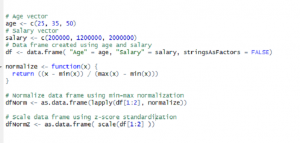
This article represents concepts around the need to normalize or scale the numeric data and code samples in R programming language which could be used to normalize or scale the data. Please feel free to comment/suggest if I missed mentioning one or more important points. Also, sorry for the typos. Following are the two different ways which could be used to normalize the data, and thus, described later in this article: Why Normalize or Scale the data? Min-Max Normalization Z-Score Standardization Why Normalize or Scale the data? There can be instances found in data frame where values for one feature could range between 1-100 and values for other feature could …
Learn R – How to Append Rows to Data Frame
This article represents concepts and code samples on how to append rows to a data frame when working with R programming language. Please feel free to comment/suggest if I missed mentioning one or more important points. Also, sorry for the typos. Following are the key points described later in this article: How to append one or more rows to an empty data frame How to append one or more rows to non-empty data frame For illustration purpose, we shall use a student data frame having following information: How to Append one or more rows to an Empty Data Frame Following code represents how to create an empty data frame and …
Learn R – How to Create Data Frame with Column Names
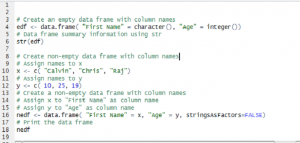
This article represents code in R programming language which could be used to create a data frame with column names. Please feel free to comment/suggest if I missed to mention one or more important points. Also, sorry for the typos. Following are the key points described later in this article: Create empty dataframe with column names Create non-empty dataframe with column names Create an Empty Dataframe with Column Names Following is the code sample: Following gets printed: Create non-empty Dataframe with Column Names Following is the code sample: Following gets printed. Note the column names such as “First Name” and “Age”
Learn R – How to Extract Rows & Columns from Data Frame
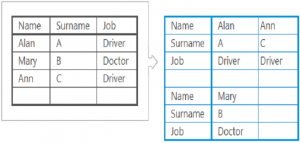
This article represents command set in R programming language, which could be used to extract rows and columns from a given data frame. When working on data analytics or data science projects, these commands come very handy in data cleaning activities. This article is meant for beginners/rookies getting started with R and wanting to know or see examples of extracting information from a data frame. Please feel free to comment/suggest if I missed to mention one or more important points. Also, sorry for the typos. Following are the key points described later in this article: Commands to extract rows and columns Command to extract a column as data frame Command …
Data Science – How to Load Data included with R
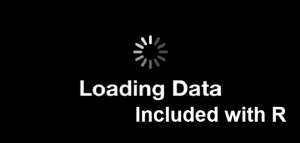
This article represents different ways in which data from different R packages could be loaded. One of the important aspect of getting on aboard with Data Science is to play with data as much as possible while one is going through the learning phase. When doing that, some of the key activities include data loading, data extraction, data wrangling/munging etc. This is where I found that loading data from different R packages is one of the key to get access to these data sets and hence, decided to write this quick article. Please feel free to comment/suggest if I missed to mention one or more important points. Also, sorry for …
Machine Learning – How to Predict Software Developers Productivity

This article represents my thoughts on how machine learning techniques could be used to solve one of the most popular problem of software industry such as whether a software developer is productive or not. Of all the effort that I have made to solve this problem using traditional programming techniques (rules-based), I could say that there is no definitive way of finding a concrete solution. As a matter of fact, I created a tool, AgileSQM to capture the software quality metrics (SQM) such as code coverage, duplication, complexity and infer from the trending data whether a software developer is productive. However, I soon hit the road-block in terms of acceptance …
Data Science – Examples of Machine Learning Problems
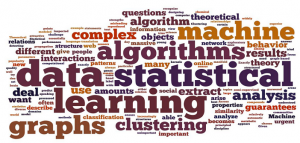
This article represents different classification of machine learning problems along with some of the examples taken from real world problems. Please feel free to comment/suggest if I missed to mention one or more important points. Also, sorry for the typos. Following is listed different categories which covers 80% of machine learning problems: Classification Clustering Regression Machine Learning – Classification Problems Simply speaking, if the answer to problems consists of discrete values such as some of the following, the problem can be termed as classification problems. These are called as “Logistic Regression” problems. Yes or no,. e.g., 1 or 0. Finite set of values representing multi-classification problems Mathematically speaking, if “h(x)” …
Top 7 Data Science Subreddits to Follow
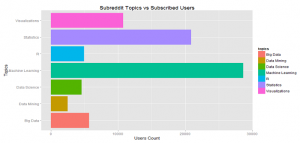
This article represents top subreddits related with Data Science on reddit.com that the Data Science aspirants or professionals could watch on regular basis for news, stories and discussions. Generally, I find reddit.com very useful to remain in touch with latest and interesting stories and keep myself up-to-date. For those unaware of what is subreddit, subreddit, simply speaking, represents the topic-based groups on reddit.com that comprise of users who want to publish/discuss news or stories related with that topic. For data science, there are multiple groups each focused on a single topic such as those mentioned below. Please feel free to comment/suggest if I missed to mention one or more important …
Data Science – Quick Start Guide for Machine Learning
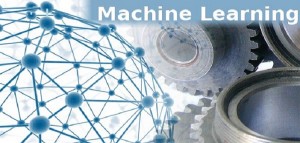
This article represents a very high-level information on different aspects of machine learning with an objective to present a quick-start read/guide for the data science beginners. One could grab one or more books on Machine Learning to learn the subject in detail. Please feel free to comment/suggest if I missed to mention one or more important points. Also, sorry for the typos. Following are the key points described later in this article: What is machine learning? Key phases of machine learning Prediction API model of machine learning What is Machine Learning? Simply speaking, Machine Learning is a set of artifical intelligence techniques which are used to solve one of …
Data Scraping – Top 5 Reasons for using Import.io Tool
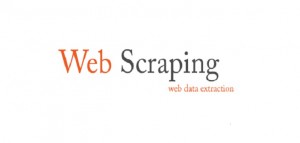
This article represents my thoughts on why one would want to use this web data scraping tool, named as import.io. I must say that I am glad I found this tool for data scraping. Please feel free to comment/suggest if I missed to mention one or more important points. Also, sorry for the typos. Following are the key points described later in this article: Key aspects of Import.io Reasons Why One Must Try Import.io for their next Data Scraping Project Use-cases where Import.io scraping tool could be used Key Aspects of Import.io Tool Import.io is a cloud-based web scraping tool which could act as a boon for those looking …
Data Science – 8 Steps to Perform Regression Analysis using R
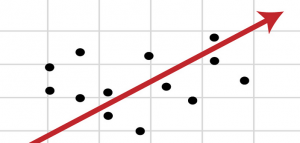
This article represents my thoughts on steps that may be required to perform regression analysis (linear or multiple) using R programming language, on a given data set where response variable is primarily a continuous variable. Remember that continuous variables are the ones which could take any numeric data unlike discreet variables which could take only limited set of data. Please feel free to comment/suggest if I missed to mention one or more important points. Also, sorry for the typos. Following are the key steps described later in this article: Load the data Observe the data Clean the data Explore the data visually Fit the linear or multiple regression model …
Data Science – Top 5 Videos to Learn Bayes’ Theorum
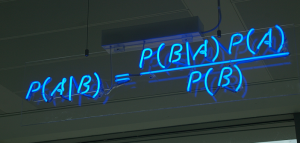
This article represents the top 5 videos that I thought to be great when I was trying to understand Bayes theorum from Youtube channels. Please feel free to comment/suggest if I missed to mention one or more important points. Also, sorry for the typos. Following are top 5 videos that I found quite useful to understand Bayes theorum: Bayes’ Theorum Formula: This one, I liked most. Very short and sweet video which explains about Bayes theorum with a very nice example of economy and stock values in just 6 minutes. For beginners, I would recommend this to be first video to get started with Bayes theorum. Bayes Theorum with …
Learn R – Hello World with R – Code Example

This article represents some of the basic concepts required to be understood to write Hello world using R programming language and, execute the same. Please feel free to comment/suggest if I missed to mention one or more important points. Also, sorry for the typos. Following are the key points described later in this article: Basic Concepts to Write Hello World Function in R Hello World – Code Example Basic Concepts to Write Hello World Function in R Following are some key points to pay attention at, while working Hello World example: R code is written as a set of one or more functions. In R, one could assign a function …
Learn R – How to Get Started with GGPlot – Code Example
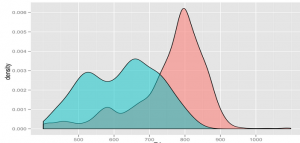
This article represents quick introduction to GGPlot along with key concepts and code examples using R programming language. Please feel free to comment/suggest if I missed to mention one or more important points. Also, sorry for the typos. Following are the key points described later in this article: Quick introduction to GGPlot Installation and loading of GGPlot GGPlot – Key Concepts Quick Introduction to GGPlot ggplot is one of statistical package that facilitates the easy creation of different plots. One of the key concept related to ggplot is that ggplot is built up layer by layer. This means that one could start by initializing the ggplot using ggplot(data) …
I found it very helpful. However the differences are not too understandable for me